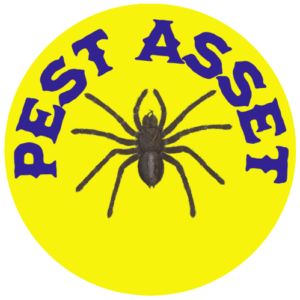Eliminate German Cockroaches: Expert Tips and Tricks
Table of Contents
Ever spotted a small, quick-moving roach in your kitchen and wondered if you’re dealing with the infamous German cockroach? You’re not alone. These tiny terrors are the most common cockroach species in the United States, and they’re notoriously hard to get rid of. But don’t worry – we’re about to crack the code on these pesky invaders.

Meet the German Cockroach: Not Your Average Bug
First things first – let’s get to know our unwelcome house guest a little better.
Identification: Spot the Difference
German cockroaches (Blattella germanica) might be small, but they’ve got some distinctive features:
- Size: About 1/2 to 5/8 inches long
- Color: Light brown to tan
- Distinguishing mark: Two dark, parallel stripes running from their head to their wings
- Wings: They have wings but rarely fly
- Antennae: Long and slender
Fun fact: Despite their name, German cockroaches aren’t from Germany. They’re believed to have originated in Southeast Asia!
The Life Cycle: From Egg to Pest
Understanding the German cockroach life cycle is key to effective control:
- Egg: Females produce egg cases (oothecae) containing 30-40 eggs
- Nymph: Young roaches molt 6-7 times before reaching adulthood
- Adult: Can live up to 9 months, with females potentially producing 4-8 egg cases in their lifetime
Here’s the kicker: German cockroaches reach maturity faster than any other residential cockroach species. This rapid reproduction is one reason they’re so challenging to control.
Why German Cockroaches Love Your Home
These little guys aren’t just randomly choosing your house for a vacation. They’re looking for three key things:
- Food: They’ll eat almost anything, from crumbs to soap scum
- Water: Even small amounts of moisture are attractive
- Shelter: Warm, dark cracks and crevices are their ideal hiding spots
The German Cockroach Invasion: How They Get In
German cockroaches are expert hitchhikers. They can enter your home through:
- Grocery bags or boxes
- Secondhand appliances or furniture
- Cracks and crevices in walls or foundations
- Pipes and utility lines
Once inside, they quickly establish themselves in kitchens, bathrooms, and other areas with food and moisture.

Health Risks: More Than Just a Nuisance
German cockroaches aren’t just gross – they can pose serious health risks:
- Allergens: Their shed skins and droppings can trigger asthma and allergies
- Disease transmission: They can carry and spread various pathogens
- Food contamination: They’ll happily crawl over your food, leaving behind bacteria
Signs of Infestation: Spot the Clues
Wondering if you’ve got a German cockroach problem? Look out for these signs:
- Live roaches: If you see one, there are likely many more hiding
- Droppings: Small, dark, pepper-like specks in drawers, corners, or under the sink
- Egg cases: Brown, purse-shaped capsules about 1/4 inch long
- Musty odor: A strong, unpleasant smell in infested areas

Prevention: Your First Line of Defense
The best way to deal with German cockroaches? Stop them from moving in! Here’s how:
- Seal entry points: Caulk cracks and crevices in walls, floors, and around pipes
- Practice good sanitation:
- Clean up food spills immediately
- Store food in airtight containers
- Take out the trash regularly
- Reduce clutter: Fewer hiding spots mean fewer roaches
- Control moisture: Fix leaky pipes and use dehumidifiers in damp areas
- Inspect incoming items: Check packages, groceries, and secondhand items before bringing them inside
DIY Control Methods: Eliminate German Cockroaches Yourself
If you’re facing a small infestation, you might be able to tackle it yourself:
- Baits: Gel baits are effective and less toxic than sprays
- Traps: Sticky traps can help monitor and reduce populations
- Diatomaceous earth: This natural powder can dehydrate roaches
- Boric acid: Another natural option, but use with caution around pets and children
Remember, consistency is key. You’ll need to keep up your efforts for several weeks to see results.

When to Call in the Pros
Sometimes, DIY just doesn’t cut it. Consider calling Pest Asset if:
- You’ve tried DIY methods without success
- You’re dealing with a large or persistent infestation
- You’re concerned about using pesticides safely
Pest Asset’s pest control experts have access to more potent treatments and can develop a comprehensive control plan tailored to your situation.
Myths Busted: Separating Fact from Fiction
Let’s clear up some common misconceptions:
- Myth: Keeping a clean house guarantees no roaches. Reality: While cleanliness helps, roaches can infest even clean homes.
- Myth: Roaches only come out at night. Reality: If you see them during the day, it often indicates a severe infestation.
- Myth: Roaches have no benefits. Reality: In nature, they’re important decomposers and food sources for other animals.
Conclusion: Winning the War Against German Cockroaches
German cockroaches might be tough opponents, but armed with knowledge and the right strategies, you can keep your home roach-free. Remember, prevention is always easier than cure. Stay vigilant, act quickly if you spot signs of infestation, and don’t hesitate to call Pest Asset if things get out of hand.
With these tips and tricks up your sleeve, you’re well on your way to cracking the code on German cockroaches. Here’s to a pest-free home!
External Sources:
- Environmental Protection Agency (EPA) – Cockroaches: https://www.epa.gov/pesticides/cockroaches
- Centers for Disease Control and Prevention (CDC) – Cockroaches: https://www.cdc.gov/nceh/publications/books/housing/cha04.htm
- University of Florida Entomology and Nematology Department – German Cockroach: https://entnemdept.ufl.edu/creatures/urban/roaches/german.htm
- World Health Organization (WHO) – Cockroaches: https://www.who.int/water_sanitation_health/resources/vector288to301.pdf
- National Pest Management Association – Cockroaches: https://www.pestworld.org/pest-guide/cockroaches/

